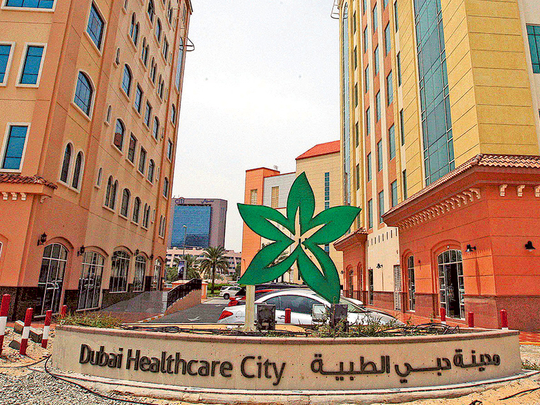
Dubai: With the UAE nursing a major gap in available health care capacity for its widening population base, new investments in the sector are being met with extremely generous lending terms from banks and financial institutions.
“Funding on a dollar basis is available at 1 per cent above the interbank offered rate from international banks, while local banks funding in dirhams are offering at 2-2.5 per cent over the interbank offered rate,” said Raza Siddiqui, CEO of Arabian Healthcare Group, which operates RAK Hospital. “I believe these are quite competitive to what businesses in some of the other sectors are being offered these days.
“We are looking at launching two multi-speciality projects, in Dubai and Ras Al Khaimah, and quite enthused about the tentative terms on offer from prospective lenders. We have confirmed KPMG to do a feasibility and we will proceed based on those recommendations.
“Banks like the fact that the supply levels in UAE’s health care sector are far from reaching maturity, more so as the population continues to expand. With hospitals, the payback time frame on investments is 10 years on average and it’s five years for clinics and smaller facilities.”
In the last four years, major investments have been committed into the local health care sector, led in the main by the private sector and as the government gradually reduces its direct role in providing top-notch care to its citizens. But the bulk of these projects were based on population projections done earlier.
Now, with the size of its resident base close to 9 million, the need is for a fresh bout of new — and massive — investments. The health care expenditure is estimated at $12 billion to $14 billion, while the per capita spend is $1,300 compared to $6,500 in the US.
“It’s a priority industry and not just in the UAE — opportunities exists in each of the Gulf states and even further, in Jordan or Egypt,” said Dr. Azad Moopen, Chairman and Managing Director of Aster DM Healthcare. “Operators have more than one option to develop needed capacity — tie up with developers to utilise large land tracts or use available funds to acquire entities in key markets to lay the base. In some of the overseas markets, we have used the second option.”
According to Siddiqui, the UAE’s short-term need is for an additional 14,000 hospital beds over and above the existing base of 13,363 beds. “The business opportunity is clear enough — 14,000 beds at $500,000 per bed,” he added. “Currently, UAE’s existing capacity works out to 1.9 on a beds per 1,000 persons basis, while the WHO (World Health Organisation) benchmark is 4 per 1,000.
“Once health insurance becomes mandatory across the country, as is the case in Abu Dhabi, that’s when the supply deficit will be felt most intensely. Currently, most of uninsured patients go back to their home countries for tapping affordable treatment.
“Sure, there have been quite a few major hospital openings of late. But there is limited time before these get absorbed by immediate needs. And investment in health care should be framed within a perspective — currently, this accounts for 3.2 per cent of the UAE’s GDP compared with 13.2 per cent in the US. That’s the gap the industry needs to shorten.”












